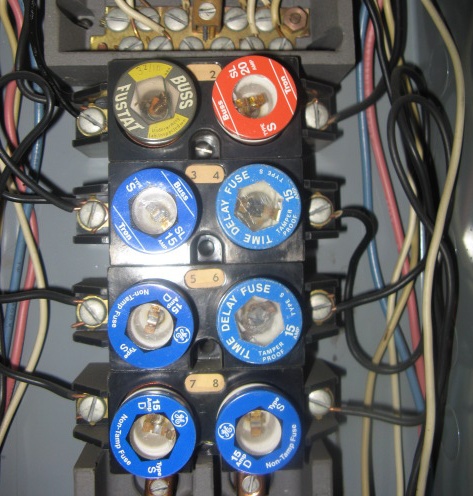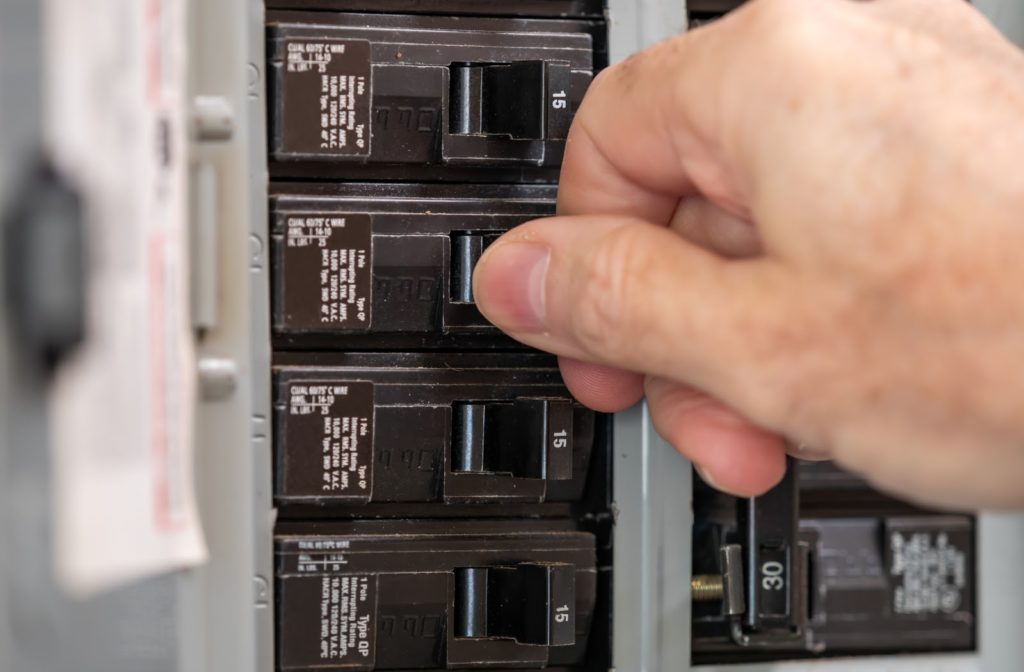Every once in a while, everyone will have to deal with a fuse being blown. This is a common occurrence for most homeowners. Recognizing and replacing a blown fuse can be simple if you are prepared and know the process. If you run into any difficulties, contact 4-Star Electric and one of our professional electricians will be able to alleviate your specific concerns.
What is a Fuse?
A fuse is essentially a short piece of wire of a selected diameter and composition that conducts current up to a certain level but melts or ‘fuses’ if the current rises above that level. It becomes an open circuit when it blows, interrupting the flow of current and preventing damage.
Typically, a fuse wire will be mounted inside a small glass casing or ceramic tube, fitted with metal end caps. The glass tube forms a guard and acts as protection for the fuse so that when it blows the molten metal does not cause damage or injury. The glass tube will allow you to see when a fuse has blown: there will be a gap in the wire or a metallic smear on the inside of the glass.
Although we often think of fuses as a nuisance, they play a very important role in preventing damage to equipment and appliances due to electrical overloading and help reduce the risk of electrical shock. Never dismiss a blown fuse as an inconvenience; it may be a sign that a real fault has developed, giving you a chance to fix the problem before any damage occurs.
Fuses will degrade with time and eventually fail. A blown fuse does not always mean that there is something wrong with your electrical system or fuse box, it usually occurs when too much output goes through the fuse.
However, do not keep replacing a fuse if it blows immediately after you replace it. In these instances, call an electrician.
What Causes a Fuse to Blow?
Typically, fuses blow or break due to too much output going through the fuse. A blown fuse can be caused by too many appliances being plugged in at once, a power surge or failure, and can also sometimes be caused by a short circuit.

How to Check for a Blown Fuse at Home
First, locate where your fuse box is. Usually, it will be in your garage or your basement. Open the fuse box and look at the glass containers that hold the fuses. If you can see that the fuse is visibly broken, or there is metallic residue on the glass from the fuse blowing, you will need to replace that particular fuse. Always turn your power off before replacing a fuse.
Replacing a Blown Fuse
Replacing a fuse can be a simple process if you know the procedure. If there are any outstanding issues with your fuse box, it is advisable to contact a professional to help you identify the problem and help you replace the blown fuse.
- First, find the fuse box. It usually is a rectangular metal box with a door on the front. Typically fuse boxes are located in a basement, garage, or in a closet on a wall that is close to the electric meter. If your property has a screw-in fuse panel, an electrician will need to replace the fuse box as they have become outdated and can not be replaced.
- Lay a rubber mat on the floor in front of the fuse box and stand on it. This will decrease the risk of receiving an electric shock. Open the fuse box door and turn on a flashlight to inspect the inside.
- Inspect each fuse closely. The glass container on a working fuse will be clear. The glass container on a fuse that has blown and cut off the power to protect the circuit might be cloudy black or grey, or have metallic residue on the sides. If you see that the glass container is cloudy, or can see that the fuse is split, this is a sign that the fuse needs to be replaced.
- Identify the specific circuit that has been affected by the blown fuse. To do this, go around your house and turn the lights on and off until you find the location where the power is not working. Turn off the lights and unplug all electrical devices, equipment, and appliances in that area before attempting to replace the blown fuse.
- Turn off the power to your house at the main switch. After you do this, you can stand on the rubber mat in front of the fuse box and unscrew the blown fuse. Make sure you do not touch the metal threads while removing the fuse; this can cause an injury leading to an electric shock or electric burn.
- Look at the fuse for its amperage rating. The rating will usually be molded in the glass container, printed on a label attached to the fuse, or stamped on the metal button of the fuse base.
- Replace the blown fuse with a new fuse that has the same amperage rating as the fuse you are replacing. Screw the new fuse into the socket that held the old blown fuse.
- Turn on your power at the main switch. The circuit should return to a working state. Close your fuse box and store the rubber mat away.




